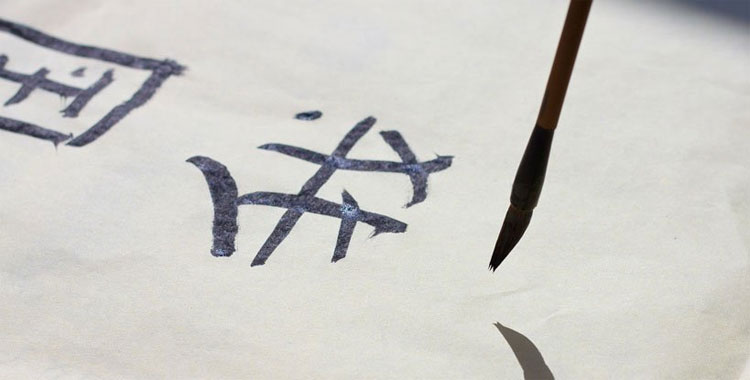Chinese squid can cure cancer
Scientists have discovered that Hu-Kaiwen Chinese ink - the type of ink used by Chinese artists and callers to create masterpieces for generations - contains the ideal molecular components that help destroy cancer cells.
The study was carried out by a group of Chinese scientists from Shanghai Fudan University after they discovered Hu Kaiwen ink has many similarities with nanomaterials used in the treatment of acute cancers. called electro-optical method .
The electro-optical method is performed as follows: the doctor conducts an injection of a nano-treated compound into the tumor in the body, then searches and destroys the tumor with a laser beam. When the laser hits the nanomaterial in the cancer cell, the cell heats up and dies.

Hu ink provides greater efficiency with the same laser when ink levels rise.(Illustration).
Although a good method, the biggest obstacle to this method is finding the right material to inject into the body.
Scientists have studied many types of artificial nanomaterials for use in phototherapy: carbon nanotubes have been modified to graphene, but these materials are either toxic, or too expensive or difficult to do.
Meanwhile, HuKaiwen ink made from plants fully meets the criteria of a nanomaterial needed: absorbing light and warming, stabilizing in water, not too expensive and complicated (in creating) and Important is not toxic to the body.
To test their hypothesis, the researchers analyzed this ink and found it included many small carbon nanoparticles, capable of heating up to 55 degrees Celsius after 5 minutes of infrared radiation - probably The ability to absorb heat better than any other material used for electrolysis ever.
'We found that the thermal impact of Hu Kaiwen ink is almost unchanged even if they are preserved for up to 90 days' - scientists explain.
In laboratory tests, the ink shows that it is compatible with human cells under normal conditions, but when heated, it kills cancer cells. Hu ink provides greater efficiency with the same laser when ink levels rise.
- Ganoderma can cure prostate cancer
- Giant demon squid: Possessing strong bite force like lion beast!
- Unbelievably strange sea animals
- Finding a fungus that can cure cancer, HIV / AIDS
- 'Red monster' is listed on the US coast
- 3 species of squid are labeled giant monsters from birth
- Gnarled vegetables: Can not cure but prevent cancer
- Graveyard squid at a depth of 1,000 meters under the sea
- Scientists accidentally found a cure for cancer
- Squid 'flying' at sea
- Hydroponic squid is nearly 10 meters long, weighs 181.4kg
- Russia claims to find a cure for all cancers
 Why is Australia the country with the highest cancer rate in the world while Vietnam ranks 100th?
Why is Australia the country with the highest cancer rate in the world while Vietnam ranks 100th? New drug causes cancer to 'starve'
New drug causes cancer to 'starve' Common cancers in men
Common cancers in men America's incredible discovery: The most feared cancer cell is love
America's incredible discovery: The most feared cancer cell is love